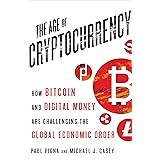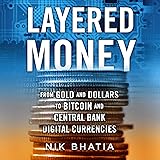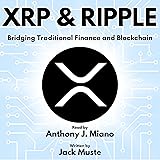Unlocking Crypto: How to Approach Trading Bitcoin with Minimal Investment
Over 300 million people worldwide engage with cryptocurrencies, captivated by the promise of digital assets. Many aspire to join this exciting market but wonder how to start trading Bitcoin with no money. The video above offers a valuable perspective on getting started, and it’s a common query for aspiring traders.
It’s important to clarify that truly “no money” trading is often a misconception, like expecting a fully-grown tree without planting any seeds. However, strategies exist to begin your crypto journey with extremely low or even zero upfront financial investment, focusing instead on effort or strategic practice. This guide explores practical pathways to enter the world of Bitcoin trading with no money or very little capital, emphasizing smart choices and risk awareness.
Navigating the “No Money” Myth in Cryptocurrency Trading
The allure of trading Bitcoin with no money is strong, yet it’s crucial to understand the nuances of this concept. Realistically, genuine trading involves capital, which is the fuel for making exchanges and generating profits. Thinking you can achieve substantial gains without any initial input often leads to disappointment or exposes you to high-risk ventures.
Instead, consider “no money” as “no significant upfront capital.” This approach shifts the focus from direct investment to earning small amounts of cryptocurrency through various activities or by practicing with simulated funds. It’s like learning to drive in a simulator before ever touching a real car, building skills and confidence without immediate financial risk.
Earning Your First Satoshis: Micro-Earning Strategies
For those committed to entering the crypto space with minimal financial outlay, several micro-earning strategies can help you accumulate your first digital assets. These methods require time and effort rather than traditional investment, acting as a stepping stone to eventually trade Bitcoin.
Crypto Faucets: A Consistent Drip of Digital Currency
Crypto faucets are websites or apps that dispense small amounts of cryptocurrency, often called “satoshis” (the smallest unit of Bitcoin), for completing simple tasks. Think of them as a leaky tap, offering tiny drips of water over time.
Tasks might include solving captchas, playing mini-games, or viewing advertisements. While individual payouts are minuscule, consistent engagement can slowly build up a small balance over weeks or months. It’s a low-yield strategy, but it introduces you to cryptocurrency transactions and wallet management.
Airdrops: Free Samples of New Projects
Airdrops are promotional events where new cryptocurrency projects distribute free tokens to a large number of wallet addresses. These are often compared to receiving free product samples from a new company hoping to gain market share.
Projects use airdrops to generate awareness, foster community engagement, and decentralize token distribution. Participating often involves simple actions like joining a Telegram group, following social media accounts, or holding a specific cryptocurrency. While not guaranteed, an airdrop could provide you with tokens that appreciate in value, offering potential capital to trade Bitcoin.
Bounty Programs: Rewarding Your Skills and Engagement
Bounty programs offer cryptocurrency rewards for completing specific tasks that benefit a blockchain project. Imagine being a detective who solves riddles for a valuable prize.
Tasks can vary widely, from finding bugs in code, creating content, promoting a project on social media, or translating documents. These programs reward active participation and specific skill sets, providing a direct way to earn cryptocurrency without an initial investment.
Play-to-Earn (P2E) Games: Gaming for Digital Assets
The rise of play-to-earn games has created a unique avenue for earning cryptocurrency while engaging in entertainment. This is similar to earning rewards in a traditional game, but here the rewards are real, tradeable digital assets.
Players earn tokens, NFTs, or other digital assets by completing quests, battling other players, or contributing to the game’s ecosystem. Many P2E games have entry barriers, but some offer free-to-play options or scholarships that allow users to start earning without upfront costs. The tokens earned can then be converted or used to trade Bitcoin.
Affiliate Marketing: Spreading the Word for Rewards
Many crypto exchanges and services offer affiliate programs that reward users for referring new customers. This is much like recommending a great movie to a friend and getting a small cut if they subscribe to the streaming service.
If you have an audience or network, you can earn a commission in cryptocurrency (often Bitcoin or stablecoins) for each new user who signs up and trades through your unique referral link. This method leverages your networking skills and influence to generate crypto income.
Simulate Success: Practice Without Financial Risk
Before attempting to trade Bitcoin with any amount of real money, especially if starting with limited funds, mastering the mechanics in a risk-free environment is paramount. This foundational step is like practicing flying in a flight simulator before ever stepping into an actual cockpit.
Demo Accounts and Paper Trading: Your Crypto Flight Simulator
Many reputable cryptocurrency exchanges and trading platforms offer demo accounts or paper trading features. These allow you to trade with virtual money in real market conditions.
Paper trading helps you understand market volatility, practice order types, develop trading strategies, and manage a portfolio without any financial exposure. It’s an invaluable learning tool that builds confidence and sharpens your decision-making skills before you commit any real cryptocurrency to actual trades.
Understanding Market Dynamics: The Rhythms of Crypto
During your practice phase, dedicate time to understanding fundamental market dynamics. Bitcoin’s price movements are influenced by supply and demand, news events, regulatory changes, and broader economic trends.
Learning about concepts like market capitalization, trading volume, support and resistance levels, and basic candlestick patterns will provide a solid analytical framework. This knowledge is your compass in the unpredictable ocean of crypto trading, guiding your future decisions when you eventually trade Bitcoin with real assets.
Leverage Trading: A Financial Magnifying Glass (Handle with Extreme Caution)
Some platforms allow leverage trading, where you can trade with more money than you actually possess, borrowed from the exchange. This method is often associated with the idea of trading Bitcoin with no money because it magnifies potential gains, but it equally magnifies potential losses. Think of it as using a powerful magnifying glass; it can reveal great detail, but it can also focus sunlight to burn quickly.
The High Stakes of Leverage: Not for Beginners
Leverage trading is an extremely high-risk strategy, particularly for beginners. While it offers the possibility of significant returns on a small initial margin, it can also lead to rapid liquidation of your entire position if the market moves against you. You risk losing more than your initial capital, leading to debt.
For someone attempting to trade Bitcoin with no money or very little, leverage is usually a path to rapid loss rather than profit. It requires deep market understanding, robust risk management, and significant emotional control, which beginners rarely possess. It is strongly advised to avoid leverage until you have substantial experience and capital.
From Pennies to Potential: Small-Scale Investment and Growth
Once you’ve accumulated a small amount of cryptocurrency through micro-earning strategies or by investing minimal sums, your journey shifts to growing that initial capital. This phase focuses on smart accumulation and patient growth.
Dollar-Cost Averaging (DCA) with Modest Amounts
Dollar-Cost Averaging (DCA) is a powerful strategy that involves investing a fixed, small amount of money at regular intervals, regardless of the asset’s price. This is like planting many small seeds consistently rather than trying to perfectly time planting one large seed.
If you’ve earned a few dollars worth of Bitcoin, you might choose to convert other earned crypto into Bitcoin consistently. DCA helps mitigate the risk of market volatility and takes the emotion out of investing. Over time, this consistent approach can build a substantial position without needing to predict market tops or bottoms.
The Compounding Power of Small Gains
Even small amounts of cryptocurrency can grow significantly over time due to compounding returns, especially in volatile markets like crypto. Reinvesting profits, no matter how tiny, allows your earnings to generate further earnings.
This principle is a core tenet of wealth creation. By starting small and consistently adding to your holdings, you harness the power of time and growth, transforming your initial minimal efforts into a more substantial portfolio capable of active Bitcoin trading.
Foundational Knowledge: Your Most Valuable Investment
The most important “investment” you can make when trying to trade Bitcoin with no money is in your education. Knowledge is a non-depreciating asset that pays dividends indefinitely.
Understanding Blockchain and Diverse Cryptocurrencies
Deepen your understanding of blockchain technology, Bitcoin’s underlying principles, and the vast ecosystem of altcoins. Learn about different use cases, technological innovations, and the unique value propositions of various projects. This knowledge helps you identify potential growth opportunities and understand market trends.
Explore resources like whitepapers, reputable crypto news sites, and educational platforms. The more you comprehend the technology and its implications, the better equipped you will be to make informed decisions and truly understand what you are trading Bitcoin for.
Technical and Fundamental Analysis Basics
Educate yourself on basic technical analysis (TA) and fundamental analysis (FA). TA involves studying price charts and indicators to predict future price movements, while FA examines a project’s underlying value, team, technology, and market position.
Even a basic grasp of these analytical tools empowers you to interpret market signals and make more strategic trading decisions, moving beyond mere speculation. These skills are essential whether you’re trading Bitcoin with pennies or millions.
Security and Mindset: Protecting Your Journey
As you embark on your crypto journey, safeguarding your assets and maintaining a balanced mindset are critical components for success, especially when starting with limited resources.
Wallet Security and Scam Avoidance
Learn about different types of crypto wallets (hot vs. cold wallets) and best practices for securing your funds. Enable two-factor authentication (2FA) on all your accounts, use strong, unique passwords, and be wary of phishing attempts and suspicious links.
The crypto space unfortunately attracts scammers. Always verify sources, be skeptical of “too good to be true” offers, and never share your private keys or seed phrases. Protecting your hard-earned (or micro-earned) assets is as important as earning them in the first place.
Patience, Realistic Expectations, and Emotional Control
The journey of trading Bitcoin with no money is often a marathon, not a sprint. Cultivate patience and maintain realistic expectations about potential returns. Cryptocurrency markets are highly volatile, and quick riches are rare and usually come with immense risk.
Emotional control is vital. Avoid impulsive decisions based on fear (FUD) or greed (FOMO). Stick to your strategies, learn from both successes and failures, and understand that consistent, disciplined effort is the most reliable path to long-term success in the crypto market. Remember, even with minimal capital, thoughtful decisions can lead to significant growth over time, allowing you to effectively trade Bitcoin.







